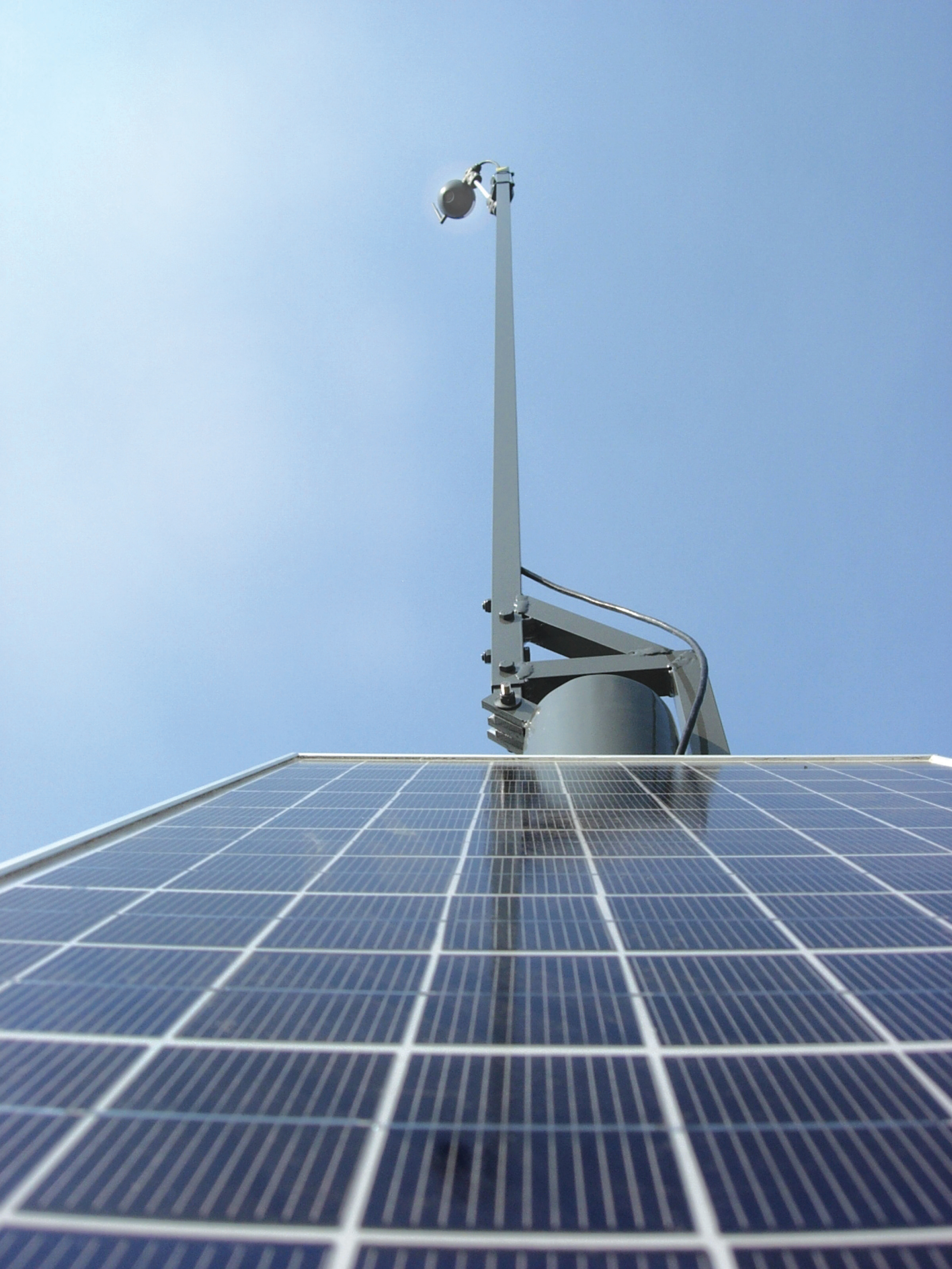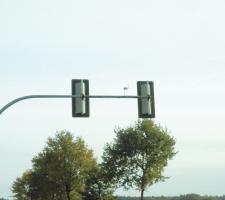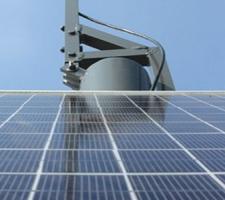
Equipment design, manufacture and lifecycle must be viewed holistically; solar power for example, might be a more obvious manifestation of 'green-ness', however other factors such as material content and durability will become increasingly important
Traficon's Head of Product and Application Management Robin Collaert offers up a discussion of the likely future green requirements of traffic video systems
At the most basic levels, ITS has the potential to significantly reduce the amounts of time which vehicles spend waiting at intersections, and less time spent waiting means less in the way of vehicular emissions. All of that will hardly come as news to most laypeople, let alone transport professionals. However, the reality is that even today too many road intersections remain unintelligent and reliant on fixed signal timing plans. The addition of intelligence and the optimisation of signal timing plans to allow dynamic control could reduce delays by anything up to 20 per cent, according to World Road Association (PIARC) studies. There are also significant safety benefits: dynamic control has been shown to result in 30 per cent fewer accidents at intersections in Europe and 18 per cent fewer at intersections in the US.All of this results - or should result - in a healthy market for detection and classification systems even within one application such as intersection control. Needless to say, there are many others.
From hype to reality
For some time, however, the 'green' issue has been something of a bolt-on and the truth is that, even going back two or three years, it was largely hype. It was more a case of organisations desiring, for whatever reason, to be seen to be green than anything of particular substance. This presents us with something of a contradictory situation, in that much of the technology which can allow us to be greener has in fact already been around for quite some time.More recently, even in just the last few months, the situation has begun to change. 'Going green' has come to mean something much more tangible, both in terms of what equipment manufacturers are offering and what customers are asking for. However, there remain challenges in terms of perception, education and actively shifting industry stakeholders' understanding of what it all means.
As industry players scramble to make ITS synonymous with the environment, it is also increasingly clear that there are two shades of 'green' to consider: the effect that the technology can have on the environment in terms of mitigating the effects of traffic movements and congestion; and the environmental price to be paid in terms of installation and ongoing consumption of resources, principally (but not exclusively) power.
Installation and maintenance
For detection and classification, application is always going to drive technology choice and the various technology solutions are always going to offer advantages and disadvantages according to need. At the outset, though, the environmental effects of installation should be an increasing consideration. The 'humble' inductive loop, for example, has long been held to score poorly in this respect. The digging and cutting involved in installation in the road surface and any ongoing maintenance or repair is disruptive and intrusive. Newer-generation loops and controlling algorithms which allow equipment to be sited in the road substrate rather than the surface have mitigated this somewhat and a properly installed loop will give years of fault-free service. The fact remains however that camera and other above-ground systems are far easier to install and gain access to on a day-to-day basis.Positive downsizing
Moving to technical performance, the ITS industry is in the rather happy position of being able to draw on the considerable resources of the consumer electronics sector. In the wider sense, this has led to a proliferation of nomadic devices and applications which would have been inconceivable even a very short time ago. InContinuing miniaturisation and power reductions are something of a hostage to the efforts of the camera manufacturers, however consumer demand is driving the market. Performance increases across the board mean that the cameras on mobile phones now regularly offer five megapixel resolution and it is up to the ITS industry to develop the operating algorithms and detection firmware behind the camera which are capable of taking advantage of such all-round progression and of running on low power.
It is important to note the issue of performance: this cannot be compromised. Manufacturers cannot expect to offer systems with, say, 80 per cent of the performance of more traditional solutions solely on the basis that they are somehow 'greener'. It is unlikely that in any event customers would be willing to accept any such degradation.
Dispersed wisdom
A new trend with regard to power consumption is to push intelligence to the edge of the network. Centralised processing is more power-hungry as it requires more bandwidth - information on everything which happens has to be brought back to a single location. At-the-edge intelligence removes the need for constant streams. It means that only that information which is necessary, such as accident or congestion alerts, need be communicated. The increasing performance and reliability of wireless infrastructure in recent years is another factor here - moving to wireless further reduces the intrusiveness of installation.Following that trend, the ultimate goal must be truly standalone detection and classification systems which can be deployed independent of local infrastructure. Traficon is currently exploring the feasibility of independent power supplies. The company has been testing solar and wind power solutions, and has also looked into the possible use of fuels cells. The deployment of any such systems will be the subject of customers' decisions, however.
Manufacturing considerations
Miniaturisation reduces the amounts of raw materials used in products' construction and this falls in with another very recent development.As noted, above, CMOS-based cameras offer the advantage of being extremely small. Within a few years, a usable solution capable of being deployed in a traffic signal pole, for example, will be the size of a €2 coin (approximately 26mm/1in). In just the last few months customers have starting to ask systems suppliers about levels of CO2 emissions per product during manufacture. At the negotiation stage, 'performance plus price' is giving way to 'performance plus price plus environmental impact' as more progressive buyers look to satisfy their organisations' environmental mission statements.
The manufacturing cost in environmental terms, like overall system durability, is less immediately visible than a solar power supply, for example. Nevertheless, the implication is that a product regarded as having 'too high' an environmental impact simply won't be considered by customers going forward. It is a point which manufacturers will need to take into account increasingly. They can also expect take-back of product at end-of-life to become a consideration in the not-too-distant future.
The grind of legislation
An obstacle to cost-effectiveness which also has knock-on effects on the environment is the continued pursuit of discrete solutions for discrete applications. Across the board, legislative developments have consistently failed to keep pace with technological progression in the ITS sector. Digitisation and the possibilities which increased integration can bring about in terms of transport network monitoring and data gathering mean that many current operating paradigms are long overdue for overhaul.At any time, but especially with the global economy in the state it is at present, a continued 'go-it-alone' approach to, for example, detection and classification, data gathering and enforcement makes very poor sense in all respects. There is a need for a more collaborative approach. On the part of the legislatures, that could mean some form of harmonisation with an attempt to reduce the variance from country to country of Type Approval processes. That would result in all sorts of advantages in terms of system cost and time to deployment. It would also inevitably benefit the environment. From the manufacturers' side, it is now perhaps time for a more unified approach and, to some extent, an effort to put aside more immediate commercial differences for the sake of the common good in the longer term. When one considers the relative size of even the biggest of players in the ITS sector, such a collaborative approach is the only realistic chance we have of making meaningful progress.













